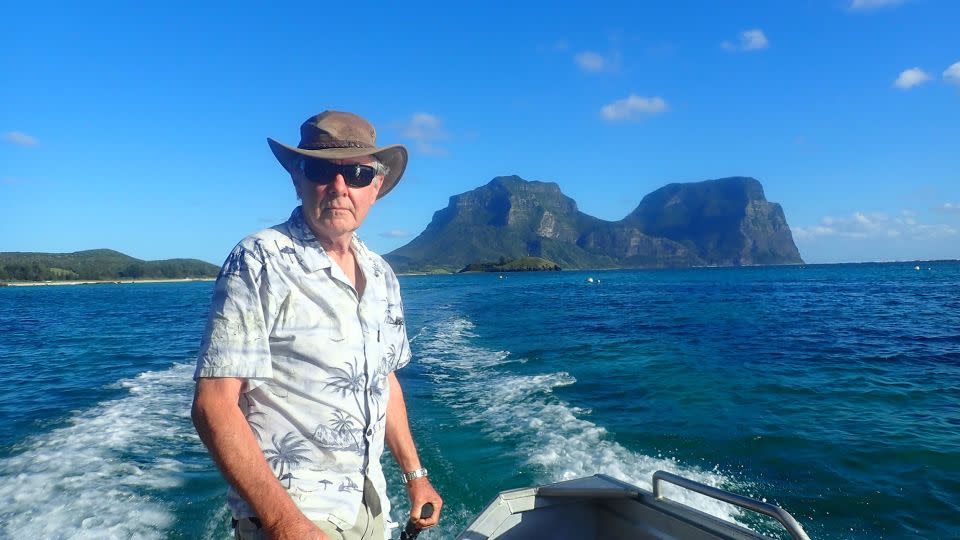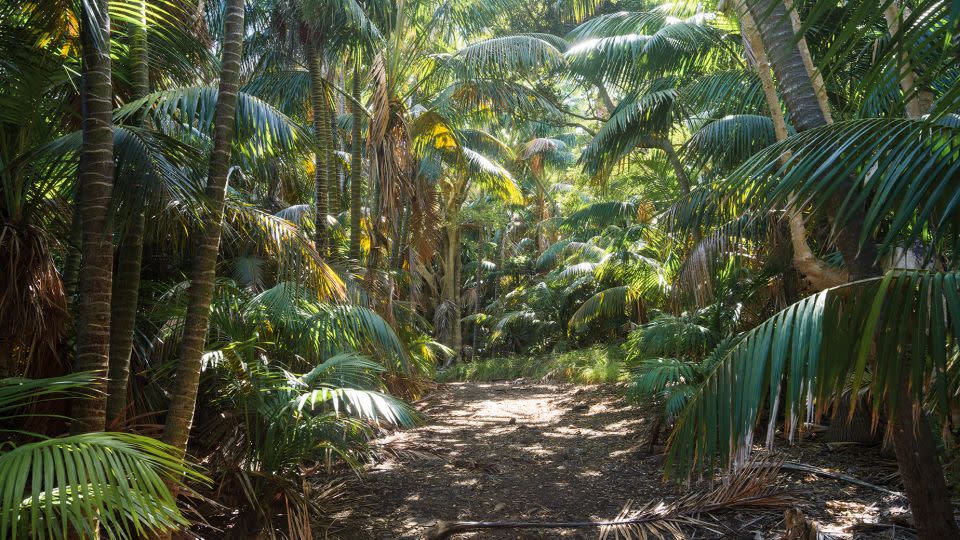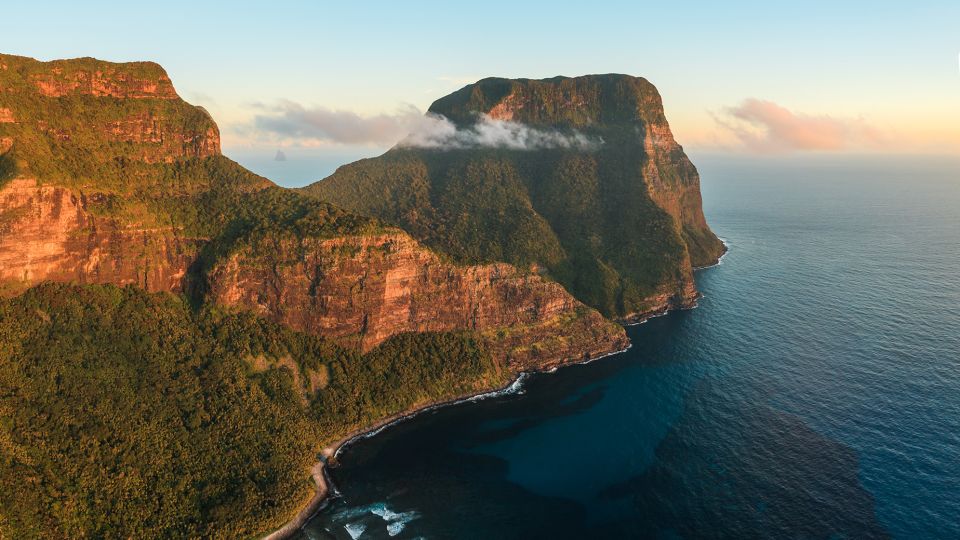Lord Howe Island looks like a destination ripe for overtourism, with green mountain peaks, pristine white sand beaches and clear blue waters teeming with colorful fish.
Yet the beaches on this island of about 400 people, located 372 miles off the east coast of Australia, are empty. The only sounds as you walk through the rainforests and mountains come from the wildlife.
“It’s what’s not there that provides that experience – that’s what makes it so unique,” said Lisa Makiiti, a sixth-generation islander who runs the boutique property Bowker beach house. There is “value in being somewhere in the world that does the opposite of every other tourist destination. It’s not bigger and better and more and more.”
The secret to that pristine landscape is a tactic used in few other places: limiting the number of tourists who can visit the area in the first place.
For over 40 years, Lord Howe has maintained a limit of 400 tourists at a time by setting the number of beds available for visitors. This was to protect Lord Howe’s many unique endemic species, which helped the island gain recognition as a UNESCO World Heritage from 1982.
While the number was arbitrary, maintaining it has minimized the environmental impact and created a “one-on-one visitor-from-local” experience, said Darcelle Matassoni, a sixth-generation islander who works for the Lord Howe Island Board, the island’s government.
It’s no surprise, then, that it’s tricky to get to; Makiiti says Bowker has bookings well into 2026. Return flights to Sydney can cost more than US$666, while accommodation for two people can range from US$200 to more than US$3,000 a night in peak season.
‘Alien concept’


These policies demonstrate a “collective desire to ensure nature prevails,” said Dean Hiscox, who chairs the board. Lord Howe Environmental Tours. Over 85% of the island is still covered in its original forest, and about 70% is a Permanent Park Preserve, meaning all development is prohibited. Residential settlement covers 15%.
Visitors often wonder if there is a push for more development, but on Lord Howe, that is a “foreign concept,” says Hiscox. Even the local community is effectively restricted by rules on housing. Many residents are descendants of original settlers who arrived in the 19th century.
“Those families who have lived here for five, six, seven generations have always recognized how special their lifestyle is here,” said Ian Hutton, a naturalist and photographer who has lived on the island since 1980. “There’s that strong generational sense of protecting their island.”
A nature like nowhere else in the world
Life on Lord Howe is “like living in a David Attenborough documentary,” Hutton, who is also a curator at the Lord Howe Island Museum, said of his website.
Although the island is only seven miles long, it is densely populated with plants and animals found nowhere else. The rainforests are full of creepers, orchids and birds. Atop Mount Gower, one of Lord Howe’s most popular hiking trails, lies a rare, endangered cloud forest. The island’s most famous endemic export is seeds for the Kentia Palm, the world’s most popular indoor palm.
On the coast, people can walk past breeding colonies of the Providence Petrel, a gray-white seabird with a slightly curved black bill that breeds mainly on Lord Howe. The birds will dive down when called and they are so friendly towards people that you can easily pick them up.
Much of the appeal is the proximity to nature. Beaches are just a few minutes’ walk or bike ride from the guesthouses, making Lord Howe “the easiest getaway,” says Anthony Riddle, a sixth-generation islander who co-founded Lord Howe Island Brewery And Lord Howe Island Distilling Company.
“You’re only on a boat for five or 10 minutes and you’re right on the main reef line. If you try to do that on the Great Barrier Reef, you might be on a boat for three or four hours and still not see nearly as much as you do here,” Hiscox said.
About 500 species of fish, as well as starfish, sea urchins and crabs, inhabit the world’s southernmost barrier reef, just off the island, according to Hutton’s website. One of the best places to dive is Ball’s Pyramid, the world’s tallest sea stackwhich is located 22 kilometers southeast of the main island and is surrounded by caves and waters teeming with rare marine life.
Like the residents of Lord Howe, those who visit the island care deeply about preserving the island’s natural world, Hiscox said. Tour guides always explain that tradition of sustainability to their guests, but they don’t have to do much to convince them of its importance.
“We’re just working it out,” Hiscox said. “We’re telling the story of what’s special about Lord Howe Island. You have a captive audience that’s already tuned into that philosophy and wants to know more about it. You’re speaking to the converted.”
Many visitors take that passion a step further by participating in local conservation programs. The Island Board has implemented a paid weed control program, and Hutton organizes ecotours and citizen science campaigns.
Sniffer dogs


There are also strict biosecurity procedures to guard against invasive species. All imports and visitors are checked, including by sniffer dogs. There are stations at the start of hiking trails where hikers can scrub their boots to stop the spread of fungus. It’s a level of intensive protection that leaves people in awe from the moment they step off the plane, Hutton said.
“The sniffer dogs check their bags and (visitors) discover that the dogs are not looking for marijuana, they are just looking for rats and frogs,” Hutton said.
Introduced feral predatory pigs, goats and cats have been removed from the island. New domestic cats have been banned since 1982. Animals introduced to control invasive species have also been removed.
The only recent point of contention was a successful government initiative in 2019 to eradicate rats and mice, which were destroying native species. The initiative was widely supported, but the use of a chemical rodenticide and regular inspections of properties irritated some.
After the rodents were wiped out, many endangered native species are now flourishing. The Woodhen, a flightless bird that is one of the rarest in the world, was nearly extinct, but its numbers have increased tenfold since it was wiped out, Hutton said.
Despite government and citizen efforts to protect the island, many of its defining features are threatened by climate change. A series of record-breaking air and ocean temperatures, fueled by climate change and the natural El Niño phenomenon, have led to several massive coral bleaching events and dying in the cloud forestThe increasing frequency of extreme weather events means their future survival “lies in the lap of the gods,” Hiscox said.
An isolated history


Today, Lord Howe is just a two-hour flight from the mainland, but historically the island and its close-knit community have been isolated.
For decades, the only way to get there was by seaplane. These “flying boats” began regular flights to Lord Howe shortly after the end of World War II and, from the 1950s, were ferrying passengers back and forth from Sydney six times a week, according to the Australian National Maritime MuseumThe journey took about three hours there and back. For the islanders, life at that time was slow and non-materialistic.
“There was no television, no internet, no phones. We lived a completely unhindered and natural lifestyle. And quite wild, I guess, but safely wild,” Makiiti said.
“No shoes and the priority for everyone was that you could swim, but we just roamed around the island with complete freedom and were outside all the time fishing, swimming and just hanging out.”
After the government built a landing strip in the 1970s, the flying boats stopped operating and “things suddenly moved a bit faster,” Makiiti says. But in many ways, life at Lord Howe is unchanged today. Residents keep their doors unlocked and there is no cell phone service beyond home Wi-Fi networks.
That isolation has presented challenges, but islanders have found unique ways to adapt. There is no high school, meaning all children must either distance learn or attend boarding schools on the mainland. Buying anything takes a lot of forethought, as all imports, including food, must arrive by biweekly freighter. The cost of living is three times higher than on the mainland: an apple costs $2, and a gallon of gasoline and a gallon of milk each cost $2.66, Riddle said.
Many islanders have offset some of these costs through farming and gardening – the island’s subtropical climate allows them to grow almost anything from root vegetables to avocados, and native plant species such as wild lemons. There is also a barter system.
“It’s a really beautiful aspect of a connected community, where you share everything with each other and if you have too much of something, everyone benefits from it,” Matassoni said.
Sustainability in their DNA
Despite the challenges, residents feel fortunate to live the way they do—by rejecting excess with a mindset that is “all about reuse, reduction and care,” says Makiiti. It’s a laid-back place where people spend their free time surfing, swimming and walking, and where almost everyone gets around on bicycles.
Respect for the environment is “instilled in us from a young age,” Matassoni said, “because we are stewards of that environment.” Both residents and visitors “are very aware that something as simple as not dropping an ice pack” should not happen, Hutton said.
About 80 percent of the island’s electricity is powered by a community solar grid, Hutton said. Everyone also has to sort their own trash and take it to the island’s waste management facility. Anything that can’t be reused, composted or recycled is turned into garden mulch.
“Nobody likes bureaucracy, but everybody understands that it’s all about making sure that we can maintain the lifestyle that we have, that we can maintain the natural environment as it is, and that we’re all very lucky to be here,” Matassoni said.
Makiiti says Bowker Beach House pays attention to the little details: the toiletries and coffee cups are reusable, and they even send coffee pods back to Nespresso. The eggs laid by the beach house’s chickens go into reusable containers.
Islanders “always use the analogy of less is more,” Riddle said. “The longer we can keep it unique, the more unique we are in the world.”
For more CNN news and newsletters, create an account at CNN.com







